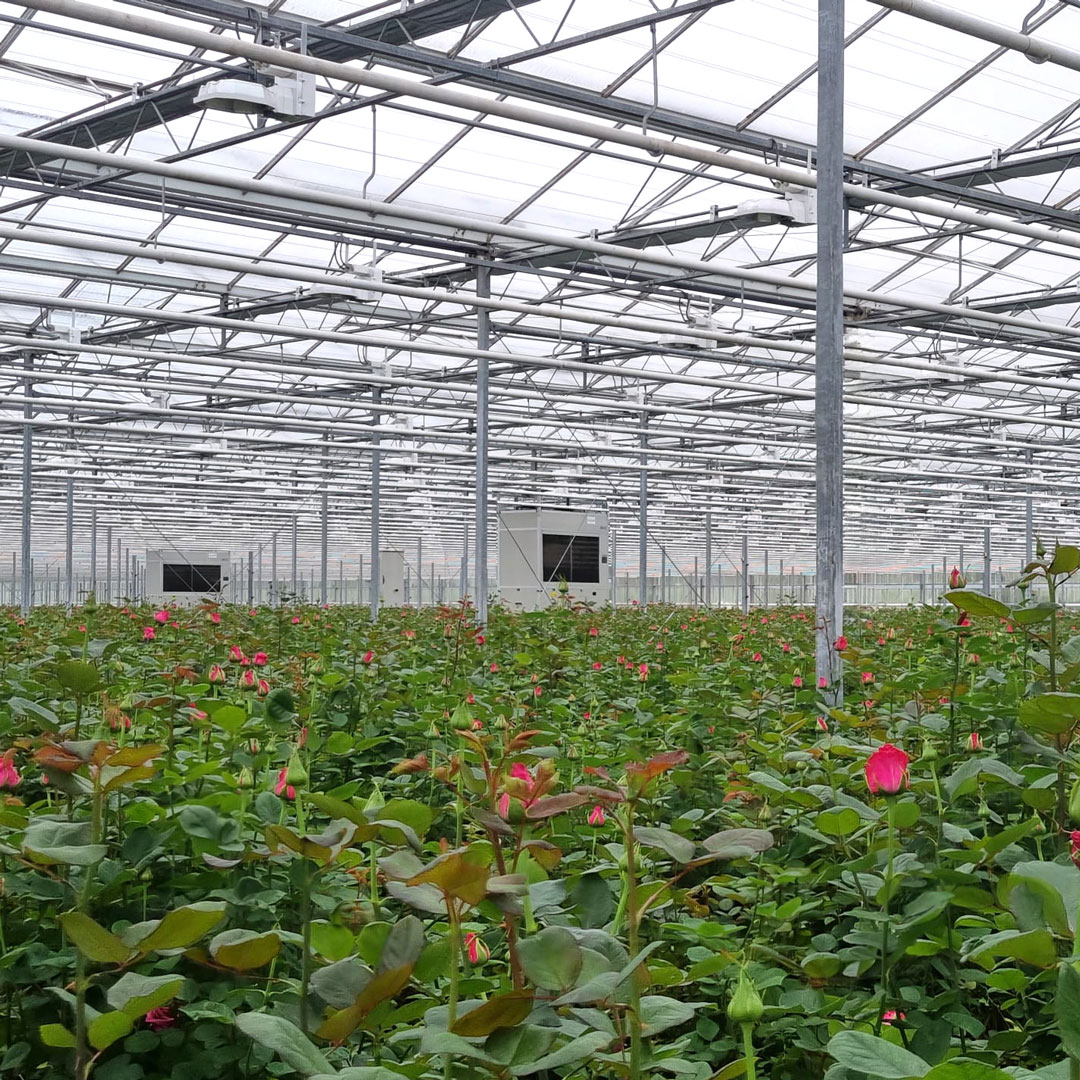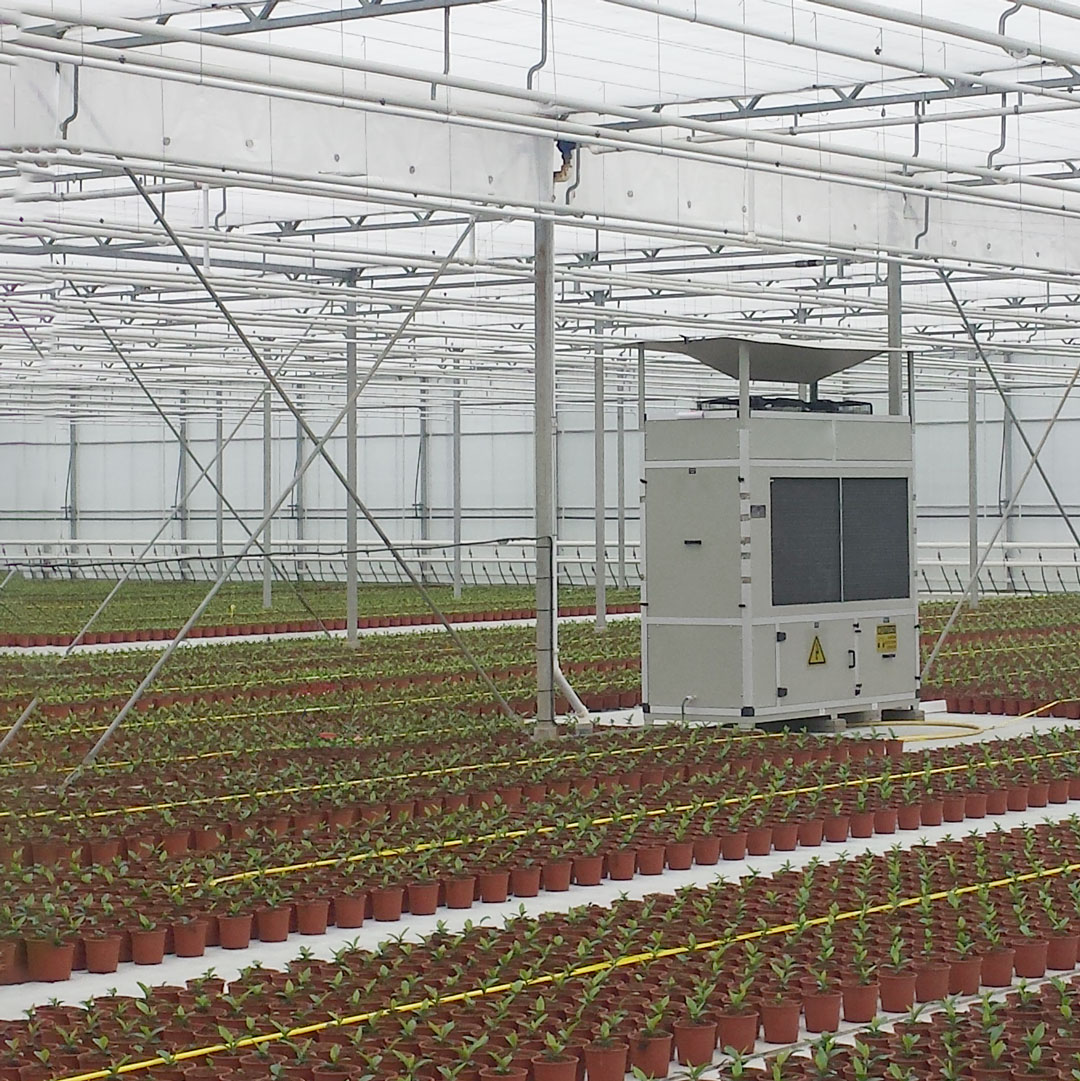Greenhouse Climate Control – How to Improve Plant Growth
Growing crops in controlled environments lets us grow larger quantities and better-quality produce, year-round. Modern horticulture is built and thrives on this principle. One of the most important aspects of growing in a protected environment, such as a greenhouse, is climate control.
By growing in a greenhouse, growers get the best of both worlds. They’re able to harness natural sunlight, yet still protect their plants from the elements. But in order to get the most out of growing in a greenhouse, growers need to effectively control the conditions inside.
Improving growing conditions and gaining control over the growing process is a crucial part of plant empowerment – an integrated cultivation approach that prioritizes the plant and aims to maximize plant growth and health.
Improving climate control in your greenhouse helps prevent diseases, boost plant growth, increase quality, and even save on energy.
Greenhouse Climate Control – Temperature
All plants have an optimal temperature range. Within this range, they perform photosynthesis and other metabolic process as best as possible – efficiently and at a fast rate. This is the most basic aspect of greenhouse climate control and is likely one of the reasons the first greenhouses were invented.
Providing cover doesn’t ensure optimal temperatures. Most growers heat or cool the air in order to reach their ideal range. The need for heating or cooling differs and depends on the climate, geography, type of crop, etc.
How to Control Greenhouse Temperature
There are many different ways to heat a greenhouse – using ground heating, table heating, heat pipes, and more. Many modern greenhouses use CHP systems (combined heat and power), to reduce energy expenses and increase their efficiency.
Another common solution is the use of thermal screens. Screens help trap heat inside the greenhouse, reducing the need for additional heating. They’re a great addition to any greenhouse that requires heating often.
Greenhouses are located all over the world, in all climates. So inevitably, some need cooling, rather than heating. Common cooling options include air conditioning, or HVAC, which can perform heating too, or wet pads and fans.
Temperature is tied very closely with humidity, so the way you choose to heat or cool should always take humidity into account, and vice versa.
Greenhouse Climate Control – Humidity
Like temperature, plants have an ideal relative humidity range as well. The right humidity level helps plants metabolize, develop and bear fruit, as well as remain healthy, strong, and vibrant.
Dry Conditions – Low Relative Humidity
If conditions are too dry, plants will transpire profusely, leading them to experience water stress. This is a physiological state in which the plant slows down or even stops important processes, in order to conserve water.
If your greenhouse is too dry, you can use misting systems or wet pads in order to introduce more water vapor to the air and increase humidity.
Humid Conditions – High Relative Humidity
But dry conditions are much less common. In most greenhouses, humidity tends to rise too high. This is because plants constantly transpire. In fact, more than 90% of the water they take in through their roots is eventually evaporated through the stomata on the leaves.
When humidity is too high, the air can become saturated with water vapor. This is known as the dew point, in which relative humidity reaches 100%. Under these conditions, transpiration becomes physically impossible. The air simply can’t carry any more water.
Transpiration is a crucial part of the plants’ nutrient transport system. So very high humidity has a similar effect to water stress. The plant is forced to slow down its metabolic processes, simply because it can’t manage to transport water.
Another major issue with high humidity is disease and mildew outbreaks. Ailments like downy mildew or gray mold require high humidity in order to develop. Once they do, however, it’s incredibly hard to stop their spread, even if humidity goes back down to optimal levels. The only way to stop the spread of molds once they break out, is by using toxic fungicides, which are unhealthy to consume in food, and are banned from use in regulated medicinal crops like cannabis.
How to Control Greenhouse Humidity
The traditional method of dealing with greenhouse humidity is ventilation. When conditions outside allow it, ventilation can be very useful. The problem is that conditions outside aren’t always favorable. When it’s rainy, humid, or too cold outside, ventilation may not help reduce humidity at all. This is, more often than not, the case overnight.
But even if ventilating does achieve a humidity reduction, it can be very inefficient and costly. This is due to releasing greenhouse air which already has energy invested into it, in the form of heat. When releasing hot air and introducing cold air, growers need must keep heating constantly, to maintain ideal temperatures, at a great expense.
The most comprehensive solution to high humidity is dehumidification. Dehumidifiers physically remove water vapor from the air, using a controlled condensation method. By doing so, dehumidifiers effectively and efficiently reduce humidity.
Using dehumidifiers to control humidity also lets growers keep their greenhouse closed, which may be their biggest advantage. Without having to ventilate in order to deal with humidity, growers can take full control over their environment, optimizing it to their needs, using much less energy. In fact, DryGair customers report a 50% reduction in energy usage, on average.
Controlling Greenhouse Radiation / Lighting
The third aspect growers may control in their greenhouses is lighting, or radiation. This is a critical factor that’s necessary to sustain plant life. The amount of radiation directly impacts the plants’ ability to photosynthesize, develop and grow.
While growing in a greenhouse may provide free light, compliments of the sun, that’s not always the case. In many climates, sunlight isn’t as consistent as growers may like it to be. Under these conditions, greenhouse often utilize supplementary grow lights to provide light when it’s cloudy or foggy, or to increase the length of the day.
Some plants, such as cannabis, have evolved to produce flowers and fruit according to the durations of daylight and darkness. This is called photoperiodism. To help these plants grow optimally, growers need to accommodate their lighting requirements. This may include up to 24 hours a day of intense light!
On the other hand, photoperiodic plants may also require extended periods of complete darkness. In most places, this can’t be provided naturally. So many cannabis growers use blackout screens to increase the dark period, or even during the night, to minimize light exposure as much as possible.
It’s important to note that radiation, including both light and non-visible forms of radiation such as UV, have a major impact on both temperature and humidity. Radiation increases the temperature, but it also increases the plants’ transpiration rates, leading to higher humidity.
Creating the ideal growing conditions in a greenhouse is a balancing act. It requires a deep understanding of greenhouse physics, proper monitoring, and constant tweaking and optimizing of growing protocols.
Managing Greenhouse CO2 Levels
Temperature, humidity, and radiation are the three most crucial aspects of greenhouse climate control. Growers can achieve amazing results just by focusing on the balance between the three.
But greenhouse operators can also take things one step further and enrich their greenhouse environment with additional CO2. CO2 is an important material necessary for photosynthesis and the plants’ assimilate production, meaning it helps the plant produce the compounds in needs in order to develop.
Enriching the air with CO2 can help plants grow faster. But it too requires balancing. In order to gain the metabolic boost from the CO2, plants may need additional lighting. As mentioned, more light may increase temperature and humidity, which growers need to take into account.
Changing any of these four elements will affect the others. Greenhouse growers need to walk a tight line to constantly manage all climate parameters.
Monitoring and Automating Greenhouse Climate Control
The best way to ensure ideal conditions in the greenhouse, at all times, is to introduce proper monitoring devices.
In order to get a real picture of what’s going on in the greenhouse, it’s important to spread out multiple monitoring devices.
For example, to get a realistic reading of temperature, growers should use multiple thermostats, located in different parts of the greenhouse. The same is true for humidity monitoring equipment.
One of the biggest problems in greenhouses is the lack of climate uniformity. So, one area may be dry, while another is very humid. This can lead to some plants growing better than others.
Even worse, inhomogeneous conditions contribute to disease development, when may easily spread and infect the rest of the plants, even if their local conditions are perfect.
Another way to ensure a proper water balance, is to monitor the dehumidifier’s water extraction. By comparing the extracted water with irrigation, growers can easily understand if they’re removing enough water.
Once a grower has a proper monitoring system in place, which provides accurate information on the conditions inside the greenhouse, they can start automating certain processes.
For example, DryGair dehumidifiers connect to the monitoring system, and can be configured to start dehumidifying only when relative humidity reaches a certain threshold. The same can be done for heating or cooling, lighting, and even CO2 enrichment.
Monitoring and automation can make all the difference between a profitable greenhouse and a failing one. It can turn a low-output greenhouse, burdened by diseases and high production costs, to an efficient greenhouse, producing large, high-quality yields.




